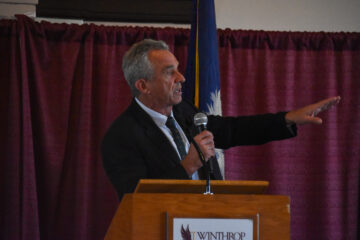144 countries participated in the Paris Agreement which sought to keep the global warming trend to well below two degrees celsius. Scientists predict that the average global temperature will increase by at least 1.5 degrees celsius by the end of the century if environmental regulations are not increased drastically in the next couple of decades. Climate change is here, and yet the Trump administration refuses to believe it. But even if he does nothing to curb carbon emissions or protect the environment, will the world survive four or eight years of Trump? Will 1.5 degrees make a big difference? What would happen if earth became even two degrees warmer?
To put this number in perspective, according to Peter deMenocal, a paleoclimate scientist at Lamont-Doherty Earth Observatory at Columbia University in New York, just about five degrees celsius separates the modern world from the last ice age, which ended about 15,000 years ago.
According to National Geographic, if the world were to increase in temperature by just one degree celsius, the arctic would be ice free for half of the year. Tens of thousands of homes around the coast would flood and hurricanes would begin to hit the south atlantic. Severe droughts in the western U.S. could cause deserts all the way from Texas to the border of Canada. Shortages in global grain and meat markets would occur, changing the global diet and leading to overall food shortages across the globe.
According to Tech Insider, if the global climate were to increase by two degrees celsius, sea levels would rise 1.6 feet, flooding coastlines across the globe and destroying homes. While freshwater may increase for high latitudes, the subtropics could lose nearly one-third of available freshwater. On top of this, heatwaves could intensify, affecting the growth of staple crops such as wheat, corn, rice and soy. According to the European Geosciences Union in 2016, changes to sea life could be drastic, with irreversible damage to 99 percent of coral reefs which would disrupt the ecosystems for up to 9 million different species.
Overall, the average temperature of the Earth has always fluctuated, and varied in temperatures and climates, as well as varied carbon dioxide levels, are not unusual. In fact, during the Cretaceous period, it has been estimated that carbon dioxide levels could have been up to five times higher than they are today. So what is the big deal about carbon emissions and global warming?
The rate of climate change and emissions today are unprecedented in all of Earth’s history. Humans have introduced carbon emissions and other greenhouse gases at a rapid rate, stimulating such a change in the climate that Earth and its ecosystems simply cannot keep up.
Climate change on this scale would result in disruption of food and water supply, flood homes worldwide, and disrupt the worldwide energy grid. These threats could come sooner than you think. According to deMenocal, the Earth is predicted to exceed the 1.5 degrees celsius milestone between 2032 and 2039, and is predicted to exceed two degrees celsius between 2050 and 2100. If we continue on the current rapid emissions rate, these changes could come even sooner than predicted.
The answer to these problems are obvious, painfully so: the world must transition to renewable resources. These resources are available, cheaper in the long term and will offer jobs and stability in the environment and economy. Trump, however, sits with the coal industry, where workers who must make a living in coal companies call for help.
These workers must be trained in renewable resource production or other job areas so they can support their families while not laying waste to the environment. Changing to renewable resources may put these workers out of jobs for a short period of time, but it will create jobs for others and will allow for a safer earth for all people. These workers can be put through training for other jobs to help the environment and make a living in order to provide for their families, while also protecting the earth and their families from climate change effects.




